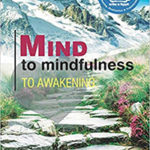
Origin of Yoga and its journey to America
Yoga represents a philosophy comprehensive enough to embrace the whole of knowledge, everything that was, is and must be. Yoga is the master of all sciences. By integrating the material and transcendental divine, yoga enables one to lead a balanced life with the optimum level of physical, mental, and spiritual wellbeing. Yoga is also the greatest and most difficult of all the arts. It is the discipline in the life of coming in conscious contact with the divine or ultimate consciousness- The source. So yoga calls for self-conscious human beings to understand mentally and intellectually its philosophy, to follow it as a path systematically, and to experiment within life and experience the new level of consciousness that in the results in enlightenment.
History of Yoga in India
The birth of human civilization (oldest) is known as Indus Valley Civilization or Sindhu-Sarswat tradition is as old as 5000 B.C. The oldest text Rig-Veda is considered to be written before 1900 BC, around 3100 BC before the Sarswat river went dry in 1900 BC
A beautiful verse from Rig-Veda explains all about Yoga:
When a Yogi has a control on his 5 organs of action, 5 organs of perception and mind through the power of Yoga, in this way when he does meditation, then he sees God – (Rig Veda Mantra I, Sukta 93 Mandal 9).
There are as many as 900 texts were written and available during the period until 300 AD, in which references about philosophy, practices of yoga are explained in detail. These texts are classified into two groups- Shruti and Smriti. Shruti is authoritative texts, while Smriti is secondary texts. All these texts prove the continuing of Yoga Tradition for over 8000 years. Following Shruti Texts have many references of philosophy and practices of Yoga: Four Vedas namely Rig Veda, Yajur-Veda, Sam-Veda and Atharva-Veda, Aryankas( texts were written perhaps in forests by masters) specially Aiterya and Shankhayana ( name of texts), Brahman Granthas( name of texts), Upanishads( 32 out of 108 Upanishad texts essentially belong to Yoga). The following Smriti texts refer about Yoga practices: Dharma Shasta ( 27 texts which refer about Yoga), Mahakavyas (the Epics; they include Mahabharata and the Ramayana) – Bhagavad Gita – the famous text is part of Mahabharata has 30 million copies in over 30 languages of the world, Puranas (the fables or writings) – 18 Puranas, Sutras (proverbs or aphorisms) – there are as many as 100 texts under this category explains about Yoga, Agamas (the philosophies; including Mantras, Tantras, and Yantras) – 250 texts, Darsanas (the philosophies; including the Vedanta) – there are total nine divisions out of which six are known as followers of Vedic Principles while rest three are Non-followers of Veda are Jainism, Buddhism, and Charvaka.
Many great masters during the period beginning from 700 AD until the present time have immensely contributed and have written very authentic texts on Yoga. Kabir, Rai Das, Meera, Sahajo Bai, Swami Vivekananda, Sri Aurobindo, Mother, Telanga Swami, Swami Rama, Osho, Maharshi Raman are few of many names who influenced the entire humanity.
The journey of Yoga to America
Swami Vivekananda in 1893, Mastmuni in 1919, Paramhamsa Yogananda in 1920, Indra Devi (Russian Born) in 1947, Maharshi Mahesh Yogi in 1960 is few of many who popularized Yoga in different forms and styles in America. The most notable who laid the foundation and awakened the American mind to think beyond their set paradigms of life was Swami Vivekananda. In 1893, in the World’s Parliament of Religions in Chicago, USA, the speech of Swami Vivekananda is well remembered. This marked the beginning of the interest of Americans in Indian Philosophy, particularly Yoga. The very first phrase used by Swami Vivekananda, “Sisters and Brothers of America” mesmerized the audience present there.
According to one conservative estimate, over 17 million Americans are practicing one or the other schools of Yoga 2-3 times weekly. Yoga is now a 20-billion-dollar industry and is increasing at a rate of 30% annually. The first-ever Yoga center was established by two monks of Swami Vivekananda, known as the Vedanta Society of Chicago.
Yoga: A science of making a better person
I was asked by an audience in Indonesia, after a lecture on Yoga, “I am a Christian, and can I practice Yoga.”
I was amused by his question and said,” If you are a Christian and practice Yoga, you become a better Christian. If you are a teacher and practice Yoga, become a better teacher. If you are a husband, practice Yoga, become a better husband.”
Yoga discovers the Real Self (that dwells within every human being) guided by Peace, Harmony, Love, Delight, and Wisdom. And when one discovers and brings these attributes into one’s life, one evolves consciously, drops all his/her inhibitions, and awakens inherent latent traits that make him wiser and wiser, besides attaining physical, mental, and emotional well being. That is why, Yoga is also termed as a way of life that harmonizes every layer of Human Existence i.e. Body, Life, and Mind. A simple query to your self followed by contemplation as to how to be a good/better person in personal, professional, social lives will take one to understand the philosophy of yoga and encourages him to practice yoga to bring about fundamental changes in life.
Contact Girish Jha info@girishjha.org


